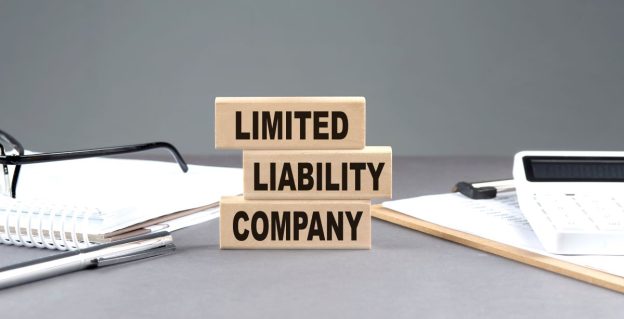New York State’s goal of zero on-site greenhouse gas emissions is driving big changes in new building construction. The State is phasing out fossil-fuel equipment for most new buildings as part of its clean energy and climate agenda. The policy and regulations affecting developers are outlined below.
NYS Climate Act
The Climate Leadership and Community Protection Act (CLCPA), signed into law by Governor Andrew Cuomo on June 18, 2019, was hailed as one of the nation’s most aggressive state greenhouse gas emissions reduction laws. The CLCPA mandates the State achieve a carbon free electricity system by 2040 and reduce its total emissions 85% by 2050. New York State continues to pursue CLCPA goals while at the same time considering amendments where timeframes may be impractical to achieve through private sector requirements.
NYS All-Electric Buildings Law
In furtherance of the CLCPA goals, the NYS All-Electric Buildings Law was adopted in 2024 which added requirements to the NYS Energy Law for new construction, specifically § 11-104.6(b). Beginning on December 31, 2025, the installation of fossil-fuel equipment in building systems will be prohibited in any new buildings seven stories or less in height. Commercial or industrial buildings larger than 100,000 square feet will be exempt from the prohibition until 2029. Beginning on January 1, 2029, all new buildings will be subject to the fossil-fuel equipment prohibition with few exemptions.
For policy reasons, there are exemptions from the fossil fuel prohibition in new building systems, including for use in:
- The generation of emergency back-up power and standby power systems
- Manufactured homes (as defined by NYS Executive Law § 601(7))
- Buildings or parts of buildings used as manufacturing facilities, commercial food establishments, laboratories, car washes, laundromats, hospitals, other medical facilities, critical infrastructure (including but not limited to emergency management facilities, wastewater treatment facilities, and water treatment and pumping facilities), agricultural buildings, fuel cell systems, and crematoriums.
A building owner or applicant may also request an exemption if they can provide the authority having jurisdiction with a written determination issued by the local utility indicating that new or expanded electric service cannot reasonably be provided by the grid. Any such exemption determination by the local utility must be guided by the standards and criteria to be set forth by the NYS Public Service Commission.
Draft NYS Department of State Regulations
The State has delegated authority to the Fire Prevention and Building Code Council (Code Council) to implement these state changes. The Code Council is statutorily organized within the NYS Department of State, an agency empowered to maintain and periodically update the NYS Energy Conservation Construction Code (Energy Code). The Code Council currently has an open regulatory proceeding to adopt regulations implementing the All-Electric Buildings Law.
Draft amendments to Part 1240 of the Energy Code to incorporate various requirements of NYS Energy Law § 11-104 were presented by staff to the Code Council in June 2024 and discussed during the June 28, 2024 Code Council meeting. The draft implementing regulations include revisions to Title 19, Part 1240 of the NYCRR. The NYS Energy Code draft regulations are generally consistent with the overall legislation summarized above.
Under the draft regulations, the new building systems requirements will not apply to buildings existing prior to the NYS All-Electric Buildings Law or where a substantially complete building permit application is filed prior to the relevant phase in date.
The proposed rules also expand on other legislated exemptions, including:
- Manufactured homes
- Agricultural buildings
- Buildings or parts of buildings used as critical infrastructure
- Buildings or parts of buildings used as hospitals or other medical facilities
- Equipment used in the generation of emergency backup power and standby power
The proposed regulations also include defined terms for the implementation of the All-Electric Buildings Law and exemptions.
The proposed implementation regulations considered by the Code Council are currently being reviewed along with comprehensive updates and revisions to the State’s codes. On February 28, 2025, the Code Council voted in favor of granting the Department of State approval to file the Notice of Proposed Rulemaking with the New York State Register. The Department of State staff stated during the February 28, 2025 meeting that public comment would be received on the draft regulations until May 27, 2025.
The Code Council also accepted its Draft Generic Environmental Impact Statement (DGEIS) on the proposed rule and code amendments and scheduled a public hearing on the DGEIS for May 16, 2025. The Code Council indicated during the February 28, 2025 meeting that it hopes to accept the Final Generic Environmental Impact Statement (FGEIS) at its June 2025 meeting and thereafter prepare a Findings Statement and Notice of Adoption for the proposed rule and code amendments for its July 2025 meeting.
Questions Regarding the All-Electric Buildings Law for Developers
The All-Electric Buildings Law requires developers to design and plan for electrification in new buildings, particularly for residential developments where natural gas, home heating fuel, and propane will no longer be viable sources of energy for heating and cooling systems. This in turn is creating a market for geothermal and other non-fossil fuel sources as part of new building construction across New York. With over 50 years of experience representing developers, building owners, and businesses, Cuddy & Feder LLP is well positioned to answer your questions about the CLCPA and recent policy changes regarding the All-Electric Buildings Law and other land use, environmental, and energy concerns. Contact Dan or Chris for more information.






